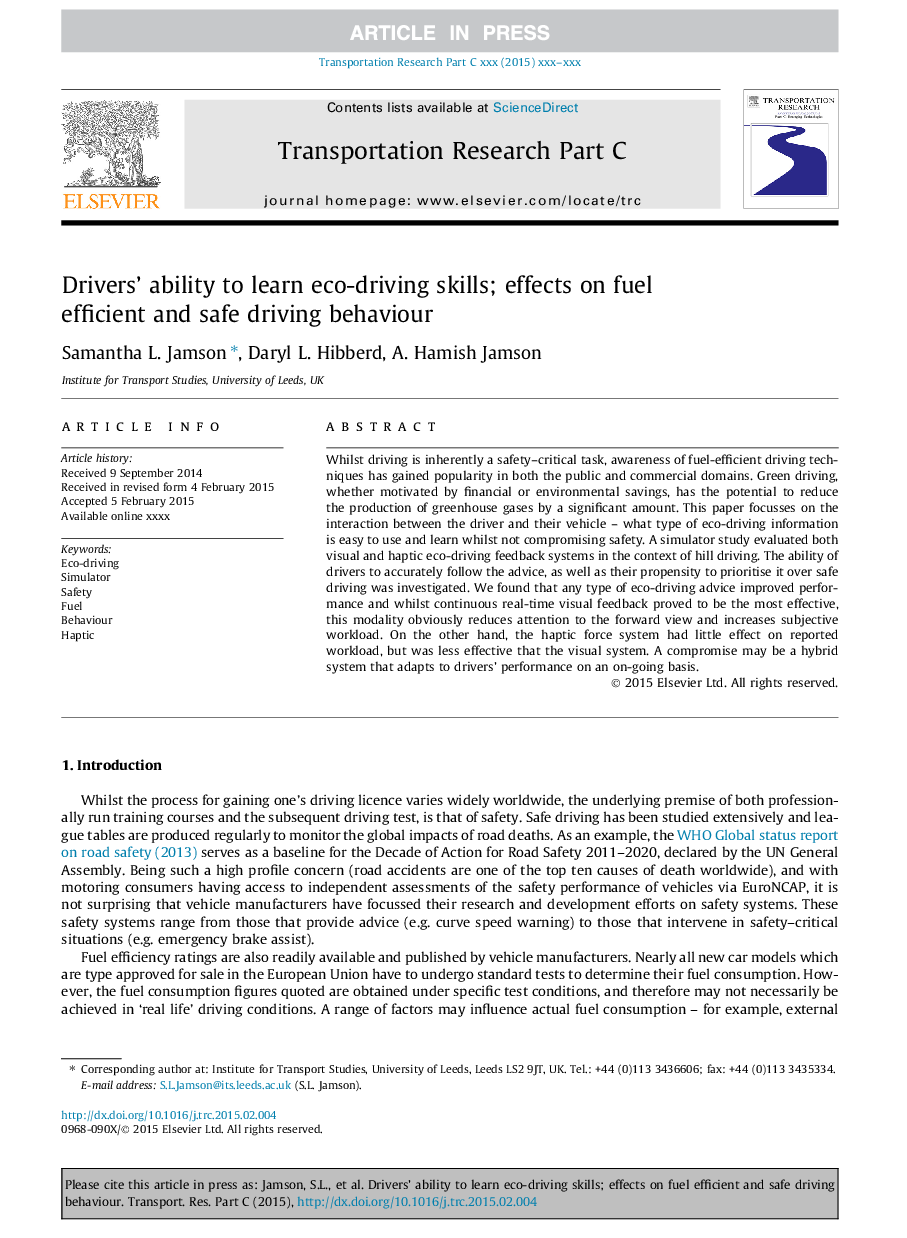| Article ID | Journal | Published Year | Pages | File Type |
|---|---|---|---|---|
| 10359028 | Transportation Research Part C: Emerging Technologies | 2015 | 12 Pages |
Abstract
Whilst driving is inherently a safety-critical task, awareness of fuel-efficient driving techniques has gained popularity in both the public and commercial domains. Green driving, whether motivated by financial or environmental savings, has the potential to reduce the production of greenhouse gases by a significant amount. This paper focusses on the interaction between the driver and their vehicle - what type of eco-driving information is easy to use and learn whilst not compromising safety. A simulator study evaluated both visual and haptic eco-driving feedback systems in the context of hill driving. The ability of drivers to accurately follow the advice, as well as their propensity to prioritise it over safe driving was investigated. We found that any type of eco-driving advice improved performance and whilst continuous real-time visual feedback proved to be the most effective, this modality obviously reduces attention to the forward view and increases subjective workload. On the other hand, the haptic force system had little effect on reported workload, but was less effective that the visual system. A compromise may be a hybrid system that adapts to drivers' performance on an on-going basis.
Related Topics
Physical Sciences and Engineering
Computer Science
Computer Science Applications
Authors
Samantha L. Jamson, Daryl L. Hibberd, A. Hamish Jamson,
